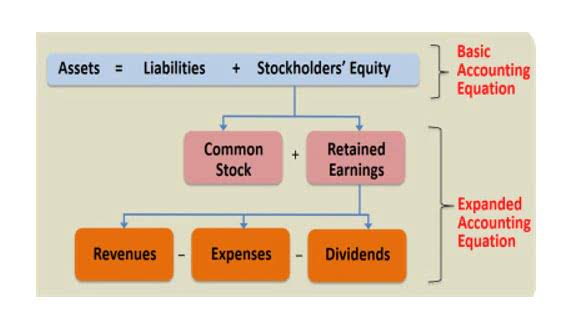
Company A issues noncumulative preference stocks every year and tries to pay dividends without skipping, given the expectations of the shareholders. However, this current noncumulative preferred stock year, it decided to skip paying the dividends to the noncumulative preference shares as it has been recording losses for the last few quarters. This way, it aimed at saving some amount to deal with a few other business expenses. Preferred stocks and corporate bonds serve as alternative investment instruments for income generation, with significant differences between these two financial vehicles. If yield is a key reason to consider preferreds, how does the asset class stack up against other income-generating choices? As shown below, preferreds compare favorably to dividend paying stocks, investment-grade corporate bonds and the broader bond market.
Preferred Stock vs. Corporate Bonds: What’s the Difference?

Investing in non-cumulative preferred stock presents a unique blend of risks and rewards that investors must carefully consider. Unlike cumulative preferred stocks, which guarantee the payment of dividends in arrears, non-cumulative preferred shares offer no such assurances. This means that if a company skips a dividend payment, it is not obligated to make it up in the future, which can significantly impact an investor’s income stream. However, this risk is often balanced by a higher dividend yield, making non-cumulative preferred stocks an attractive option for those seeking higher immediate returns.
Issuers
Because preferred shareholders do not enjoy the same guarantees as creditors, the ratings on preferred QuickBooks shares are generally lower than the same issuer’s bonds, with the yields being accordingly higher. In addition, bonds often have a term that matures after a certain amount of time. There is no “end date” for most preferred stock, except dissolution of the company.

Capturing Potential Yield
The biggest difference between cumulative and noncumulative preferred stock is that it treats missed dividend payments differently. In preferred stock that is cumulative, if the company does miss a dividend, the unpaid dividends accumulate and must be paid in full before there is any dividend payment to common shareholders. On the other hand, if a dividend is missed with a non cumulative preferred stock, it is forfeited and not paid in the future. Preferred stockholders get guaranteed dividends whereas common stockholders only get dividends when the business has surplus cash. This is because the company is legally bound to pay these payments to preferred stockholders whenever company has enough cash.
- By examining historical examples, investors can gain valuable insights into companies’ behavior towards their preferred dividend policies, enabling them to make informed decisions.
- Cumulative preferred stock is a class of shares wherein any unpaid or undeclared dividends for the current year must be accumulated and paid for in the future.
- Non-cumulative preferred stock loses its rights to any payment if it isn’t claimed.
- This type of equity investment represents ownership of a company and results in prioritized treatment for dividend distributions.
- Having this type of flexibility is crucial for keeping cash flow during difficult times.
- This flexibility can enhance the company’s liquidity and overall financial stability, which in turn can positively affect the company’s credit rating and borrowing capacity.
- When the company gets through the trouble and starts paying out dividends again, standard preferred stock shareholders possess no rights to receive any missed dividends.
- These technological developments have democratized access to non-cumulative preferred stocks, making them a more viable option for a wider range of investors.
- As in the name, preferred stockholders are preferred over common stockholders in terms of dividend payments.
- Non-cumulative preferred stock offers greater flexibility to the company but carries higher risk for investors.
- Holders of depositary receipts, each representing one-twenty-fifth of a full preferred share, will be paid $9.6875 for each receipt held.
- If the stock were cumulative preferred stock, then the missed dividend would accumulate and the company would need to pay it in a future year before any dividends could be paid to common shareholders.
Noncumulative preferred stock is a distinct class of preferred stocks that stands out for its unique dividend structure. Unlike cumulative preferred stocks, noncumulative preferred shareholders do not receive any dividends accumulated during the years the company missed paying them. Instead, investors receive only the current year’s dividend payment or none at all if the firm fails to distribute dividends that year. To understand this difference, it is essential to examine the definition of noncumulative preferred stock and compare it with cumulative preferred stock and common stock. This gives investors greater security than noncumulative preferred stock, as they can be assured of receiving their due dividends at some point in the future, even if the company faces temporary financial difficulties.
- The landscape for non-cumulative preferred stock is shaped by various market trends that influence both investor behavior and corporate strategies.
- Dividends on noncumulative preferred stock are typically treated as qualified dividends and may be taxed at a lower rate than ordinary income depending on the jurisdiction thereof and holding period.
- Some types of preferred stock have a fixed end date when, like a bond, the original capital is returned to shareholders.
- While the shares of ETFs are tradable on secondary markets, they may not readily trade in all market conditions and may trade at significant discounts in periods of market stress.
- Noncumulative preferred stock is a distinct class of preferred stocks that stands out for its unique dividend structure.
Risks Associated with Noncumulative Preferred Stock

In conclusion, understanding the features and implications of noncumulative preferred stock is crucial when considering adding this type of investment to your portfolio. From an accounting perspective, non-cumulative preferred stock is typically classified as equity on the balance sheet, although it possesses characteristics of both debt and equity. This classification can be advantageous for companies looking to strengthen their equity https://www.bookstime.com/articles/statement-of-stockholders-equity base without increasing their debt load. The absence of mandatory dividend payments means that the company can retain more earnings, which can be reinvested into the business or used to pay down existing debt. This can lead to an improved debt-to-equity ratio, making the company more attractive to potential investors and creditors. The issuance of non-cumulative preferred stock can have a nuanced impact on shareholder equity, influencing both the company’s financial structure and the perceptions of various stakeholders.
Convertible and Callable Features

This may cause the fund to experience tracking errors relative to performance of the index. In general, ETFs can be expected to move up or down in value with the value of the applicable index. Although ETF shares may be bought and sold on the exchange through any brokerage account, ETF shares are not individually redeemable from the Fund. Investors may acquire ETFs and tender them for redemption through the Fund in Creation Unit Aggregations only.

